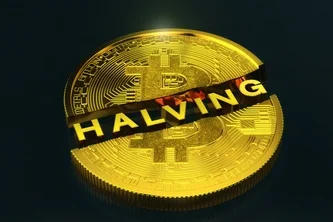Introduction
Imagine a world where every four years, the reward for finding gold is cut in half. Sounds intriguing, right? In the world of Bitcoin, this is exactly what happens. It’s called “Bitcoin halving,” and it’s one of the most anticipated events in the cryptocurrency space. Whether you’re a seasoned investor or just curious about Bitcoin, understanding the significance of halving is crucial. This event not only impacts the supply of Bitcoin but also has a ripple effect across the entire market. So, what exactly is Bitcoin halving, and why does it matter? Let’s dive in and explore the ins and outs of this fascinating phenomenon.

What Is Bitcoin Halving?
Bitcoin halving is a pre-programmed event that occurs roughly every four years, cutting the block reward that miners receive in half. When Bitcoin was first introduced by Satoshi Nakamoto in 2009, miners earned 50 BTC per block. After the first halving in 2012, this reward dropped to 25 BTC. The second halving in 2016 brought it down to 12.5 BTC, and the most recent halving in 2020 reduced the reward to 6.25 BTC. This mechanism is built into Bitcoin’s code to control the supply and is a key part of its deflationary nature.
The Purpose of Bitcoin Halving
But why halve the reward? The primary purpose is to curb inflation. Unlike fiat currencies, which can be printed endlessly, Bitcoin has a finite supply of 21 million coins. By halving the reward, the rate at which new Bitcoin enters circulation is slowed down, ensuring that the total supply doesn’t get exhausted too quickly. This scarcity is what gives Bitcoin its value and positions it as “digital gold.”
How Does Bitcoin Halving Work?
To understand how Bitcoin halving works, let’s first break down the concept of mining. Bitcoin mining is the process by which transactions are verified and added to the blockchain. Miners use powerful computers to solve complex mathematical problems, and in return, they receive a block reward, which is currently 6.25 BTC. Halving doesn’t change the mining process itself, but it reduces the reward for each block mined, making it twice as hard to earn the same amount of Bitcoin.
The Impact of Halving on Miners
Bitcoin halving has a significant impact on miners. With the reward reduced, miners must weigh the costs of their operations against the potential rewards. As the block reward diminishes, some miners may find it less profitable to continue, especially if the price of Bitcoin doesn’t rise to compensate for the reduced rewards. This can lead to a shakeout in the mining industry, where only the most efficient and cost-effective miners survive.
Historical Impact of Bitcoin Halving
Historically, Bitcoin halving has been followed by significant price increases. After the first halving in 2012, Bitcoin’s price surged from around $12 to over $1,000 within a year. The second halving in 2016 saw Bitcoin rise from about $650 to nearly $20,000 by the end of 2017. The most recent halving in 2020 triggered a massive bull run, propelling Bitcoin to an all-time high of over $60,000 in 2021.

Why Does Bitcoin’s Price Increase After Halving?
The price increase post-halving can be attributed to the basic economic principle of supply and demand. With fewer new Bitcoins entering the market, scarcity increases, which, in turn, drives up the price—assuming demand remains constant or increases. Additionally, halving events generate significant media coverage, attracting new investors and further boosting demand.
The Speculative Nature of Halving
While historical trends suggest a price increase post-halving, it’s essential to note that the market’s reaction is not guaranteed. The cryptocurrency market is highly speculative, and various factors, including macroeconomic conditions, regulatory changes, and technological developments, can influence Bitcoin’s price. Therefore, while halving is a key event, it’s not the only factor that determines the market’s direction.
The Ripple Effect of Halving
Bitcoin halving doesn’t just impact the price of Bitcoin; it also has a ripple effect across the entire cryptocurrency market. As Bitcoin’s price rises, so does the price of many altcoins, which are often traded against Bitcoin. This phenomenon, known as “altseason,” can lead to substantial gains in the broader crypto market. Conversely, if Bitcoin’s price stagnates or falls after a halving, it can lead to a market-wide downturn.
Halving and Network Security
Another critical aspect of Bitcoin halving is its impact on network security. The reduction in block rewards can potentially reduce the incentive for miners to participate in the network, which could make it less secure. However, Bitcoin’s design includes several safeguards, such as the difficulty adjustment mechanism, which ensures that the network remains secure even as the reward decreases.
The Role of Transaction Fees Post-Halving
As block rewards decrease over time, transaction fees will play an increasingly important role in incentivizing miners. Currently, transaction fees make up a small portion of miners’ earnings, but as the block reward continues to halve, fees will need to increase to maintain network security. This could lead to higher costs for users, but it’s also a critical component of Bitcoin’s long-term sustainability.
Predicting the Future of Bitcoin Post-Halving
Predicting the exact impact of future halvings is challenging, but there are several scenarios to consider. If demand for Bitcoin continues to grow, the reduced supply could lead to even higher prices. On the other hand, if demand wanes or if new regulatory challenges emerge, the impact of future halvings could be less pronounced.
The Role of Institutional Investors
Institutional investors have played an increasingly important role in the Bitcoin market, particularly since the 2020 halving. Companies like Tesla, MicroStrategy, and Square have added Bitcoin to their balance sheets, and more traditional financial institutions are offering Bitcoin-related products. The involvement of these large players could amplify the effects of future halvings, as their buying power is far greater than that of retail investors.
Halving and Global Adoption
As Bitcoin continues to mature, its adoption is spreading across the globe. Countries like El Salvador have even adopted Bitcoin as legal tender. The increasing global adoption of Bitcoin could make future halvings even more significant, as the effects will be felt on a much larger scale. However, this also brings potential risks, as regulatory scrutiny could increase, potentially dampening the impact of future halvings.
Conclusion: The Significance of Bitcoin Halving
Bitcoin halving is a fundamental aspect of the cryptocurrency’s design, ensuring its scarcity and influencing its market dynamics. While the exact impact of each halving can vary, the event is undeniably significant, with the potential to drive substantial price movements and shape the broader market. As we look toward future halvings, the key to navigating these events lies in understanding their mechanics, historical context, and the broader market conditions that influence their outcomes. Whether you’re a long-term holder, a trader, or simply curious about Bitcoin, staying informed about halving is crucial to making informed decisions in this rapidly evolving market.
Read More Posts
Navigating Bear and Bull Seasons in the Cryptocurrency Market
Top 10 Richest Actors in the World 2024
FAQs
The next Bitcoin halving is expected to occur in 2024, when the block reward will be reduced from 6.25 BTC to 3.125 BTC. The exact date depends on the pace at which blocks are mined.
Bitcoin halving reduces the block reward, making mining less profitable. Miners may need to improve efficiency or rely more on transaction fees to remain profitable.
While historical trends suggest a price increase following a halving, it’s not guaranteed. The market’s reaction depends on various factors, including demand, investor sentiment, and macroeconomic conditions.
Bitcoin will undergo a total of 32 halvings until the maximum supply of 21 million BTC is reached. This process will continue until approximately 2140.
Yes, as block rewards decrease, transaction fees may need to increase to incentivize miners. This could lead to higher costs for users, especially during periods of high network activity.

